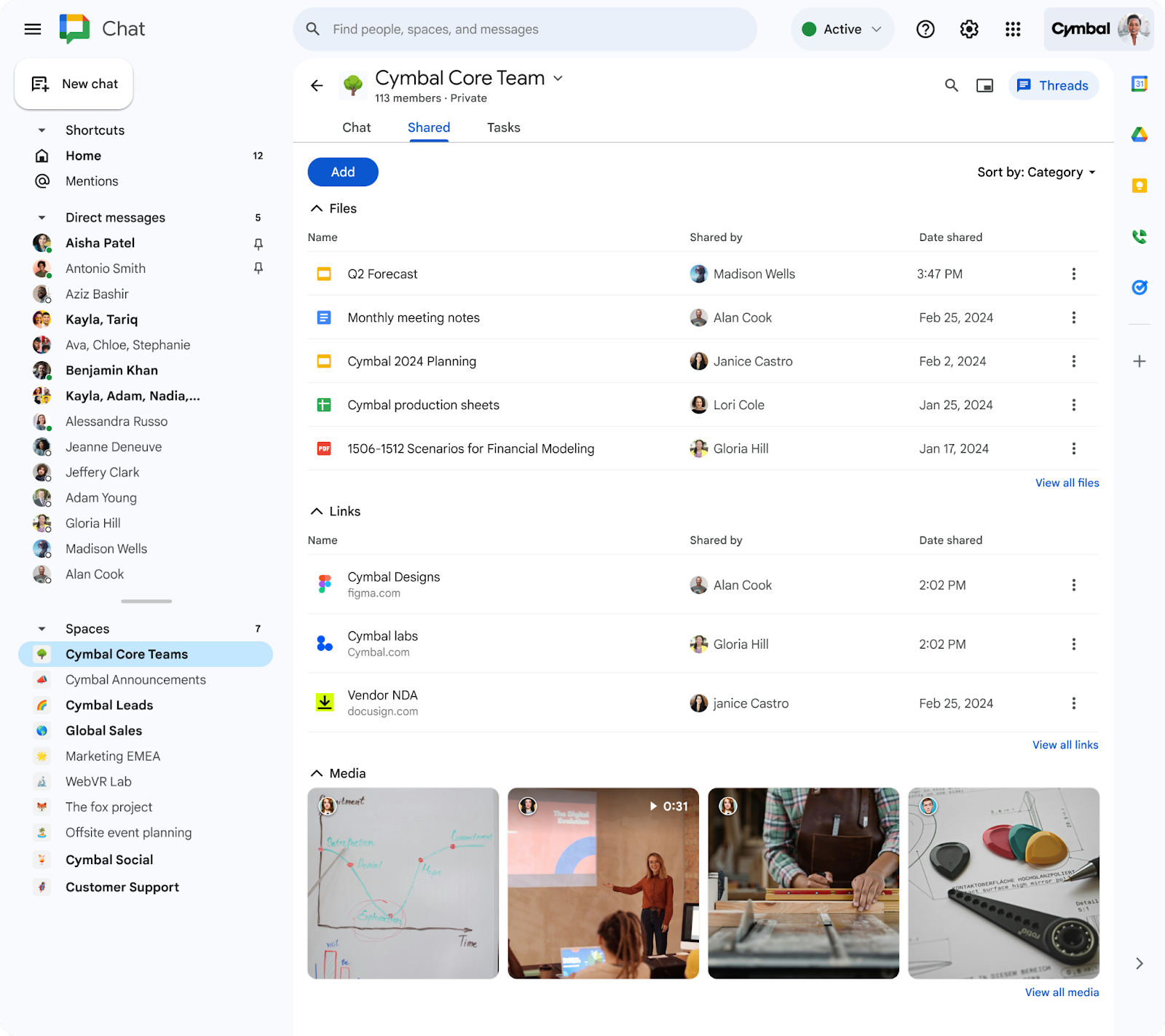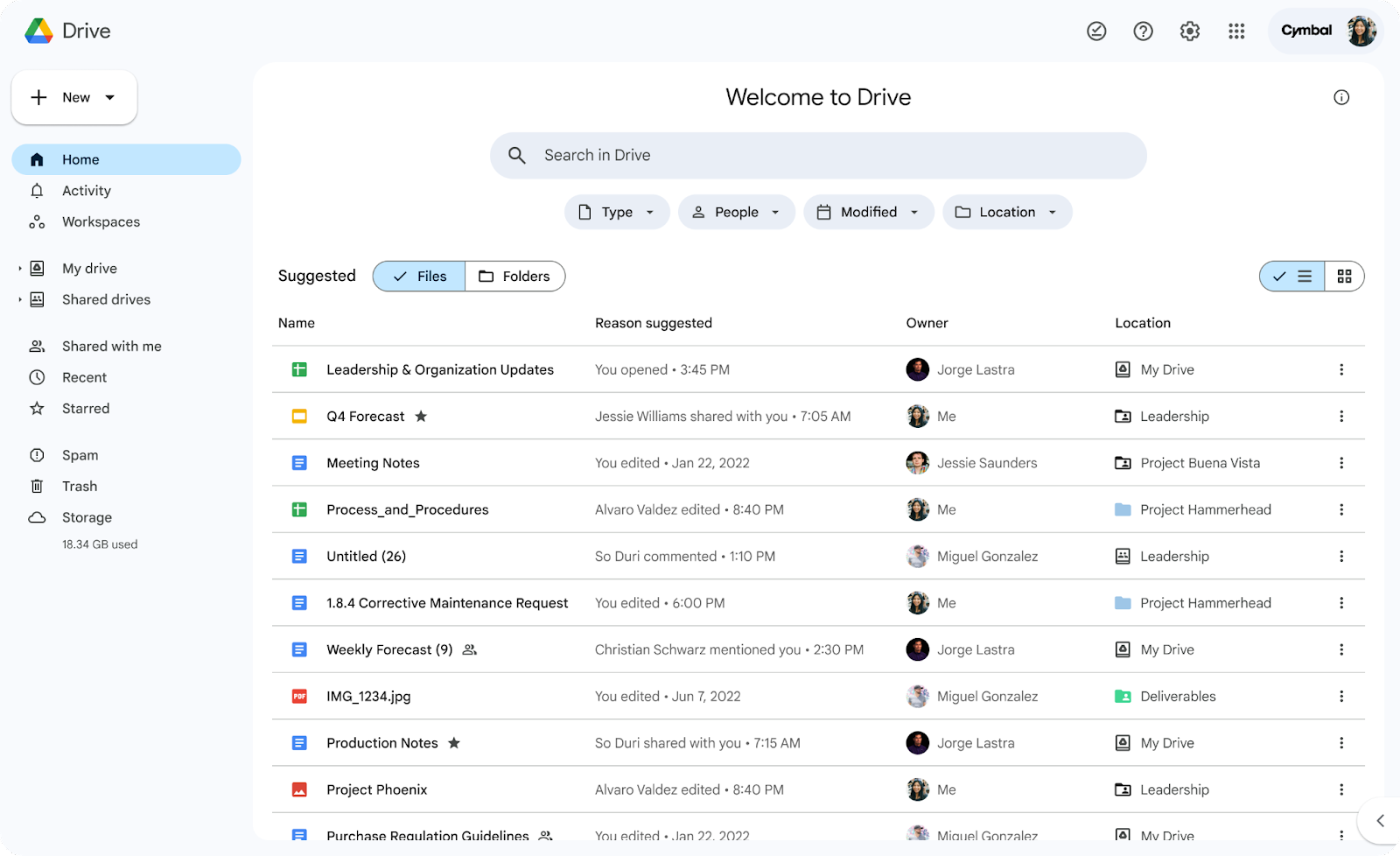What’s changing
We’re enhancing the Files tab in Google Chat spaces to improve upon the file management experience and create a central place to manage all conversation-related artifacts. The updated tab will now be called Shared.
In addition to the new tab name, you will also notice a refreshed user interface and features like a sort drop-down menu, support for shared links and media files, and more.
This update reflects our continued effort to make Google Chat the central hub for project and team collaboration in Google Workspace.
Who’s impacted
End users
Why you’d use it
The new Shared tab improves team collaboration by providing a centralized and visible method to access shared content shared within a space.
Additional details
Using the new sort drop-down, you can narrow down the list of documents displayed based on category (file, link, media) or date shared.
Getting started
- Admins: There is no admin control for this feature.
- End users: At the top of a space in Google Chat, you will see the following tabs: Chat, Shared and Tasks. Upon clicking Shared, you will see three sections: Files, Links and Media. Visit the Help Center to learn more about sending & sharing files in Google Chat messages.
Rollout pace
- Rapid Release domains: Extended rollout (potentially longer than 15 days for feature visibility) starting on March 27, 2024
- Scheduled Release domains: Gradual rollout (up to 15 days for feature visibility) starting on April 17, 2024
Availability
- Available to all Google Workspace customers, Google Workspace Individual subscribers, and users with personal Google accounts





.gif)